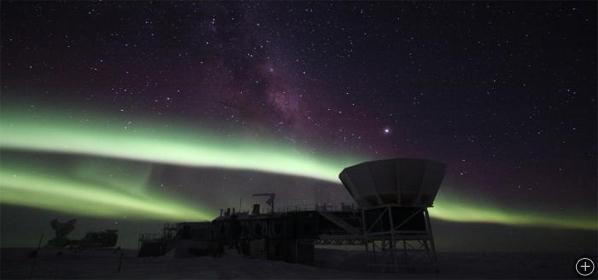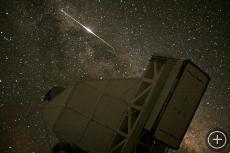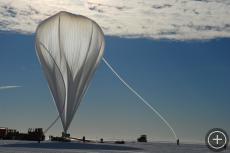Astronomy in Antarctica
Ask an astronomer to describe the perfect place to put a telescope, and here’s what she’ll tell you: Make it cold, make it dark, make it high-altitude, and make it remote. In short, make it Antarctica.
All light-based astronomy is vulnerable to interference from the atmosphere, the same jittery effect that makes stars twinkle. Much like trying to see the bottom of a swimming pool, observing space through the moving air masses in our atmosphere causes images to wiggle and warp.
The very attributes that make Antarctica inhospitable to life make it ideal for astronomy. The high altitude means there’s less atmosphere to look through. The cold, dry air makes for minimal water vapor and less atmospheric emission of infrared light, both of which interfere with observations. Best of all, 24-hour darkness in winter means no daily temperature oscillations, reducing air currents.
The South Pole Telescope, located at the Amundsen-Scott Station near the South Pole, takes advantage of these clear skies to search for evidence of dark energy amid galaxy clusters. Dark energy is theorized to be a form of energy that is pushing everything in the universe apart.
To further reduce atmospheric interference, some astronomers use balloons to bring their instruments 35,000 feet into the air. Inexpensive compared to satellite-based astronomy, balloon-borne astronomy is ideally suited to Antarctica, where circumpolar winds high in the stratosphere carry balloons steadily and predictably around the pole.
One of the biggest astronomical efforts in Antarctica is actually taking place under the ice. IceCube is an array of ultra-sensitive light detectors buried a mile deep into the Antarctic ice sheet. These detectors can spot the passage of high-energy neutrinos, particles created by the most violent events in the universe, allowing astronomers to see impossibly distant cosmic events by detecting the neutrinos they create.
ICE-T on Dome C
An international team of astronomers have their sites set on another location in Antarctica—a formidably remote location known as Dome C—for construction of a new telescope. High on the Antarctic plateau, Dome C boasts atmospheric conditions that are even calmer—and thereby clearer—than those at the South Pole. “A telescope there would perform as well as a much larger one anywhere else on Earth,” says Will Saunders, astronomer at the Anglo-Australian Observatory. “It’s nearly as good as being in space.” The telescope in the works for Dome C, called ICE-T, will search for exoplanets, earth-like planets in other solar systems.












